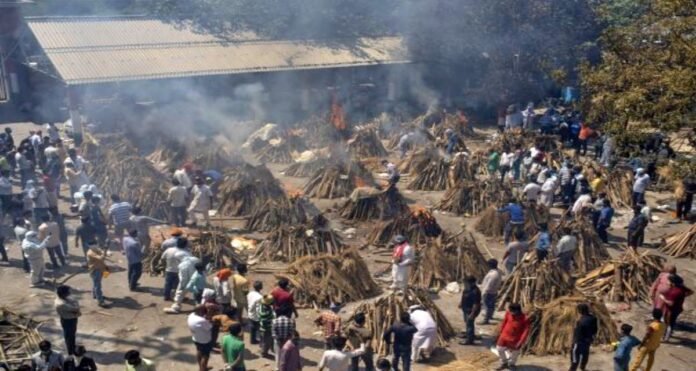
London: The World Health Organization (WHO) estimates that in the last two years, about 15 million people (Global Covid Death Toll) have lost their lives either due to coronavirus or its impact on health systems. This is more than double the 6 million deaths, according to official figures provided by the countries. Most of the deaths occurred in Southeast Asia, Europe and America. It has also been told in this report that there have been 47 lakh deaths due to corona in India. However, India has strongly objected to these figures of WHO.
WHO chief Tedros Adhanom Ghebreyesus called the figure “serious”, saying it should prompt countries to invest more in their capabilities to deal with future health emergencies.
India raised questions about the data methodology
The Government of India has strongly objected to the data released by the World Health Organization. On behalf of the government, it has been said that the World Health Organization has issued additional mortality estimates without adequately addressing India’s concerns from Russia. India said the validity of the models and the data methodology used to release these figures are questionable.
India raised questions
The Government of India said, “There is an objection to this data. There are questions on WHO’s model, data collection, data source, and process (methodology). We will use all official channels and we will keep the objection of this data to the Executive Board. The data was released in the basis of 17 states. So on what basis were the 17 states selected? The names of these states were told after 4 months of our constant questioning. WHO did not give information for how long or for what time.
In November, Union Health Secretary Rajesh Bhushan wrote 10 letters to WHO in this regard, but no reply was given. On the visit of WHO’s DG, Tedros to India, questions were raised about such data, he said that his technical team is looking into it. These figures of death were taken through the websites of the states, news published in newspapers quoting RTI, and telephonic surveys.
Death figures are based on these states: Maharashtra, Kerala, Rajasthan, Delhi, Haryana, Himachal, Punjab, Tamil Nadu, West Bengal, Chhattisgarh, Assam, Andhra Pradesh, Chandigarh Bihar, Karnataka, Madhya Pradesh, and UP. WHO argues that these states have 60% of India’s population.

We gave the data for 2020. If the 2021 data is going to come, we will give it. Our data comes from the Registrar General of India under the Birth and Death Registration Act. which is to come. We’ll share as it comes.
Why were we placed in tier 2? Whereas small countries where there is no proper mechanism for data inclusion, how are they placed in tier 1?
Under the WHO, scientists were given the responsibility of assessing the actual number of deaths by the end of January 2020 and last year. According to the report, 1.33 crore to 1.66 crore people died either due to coronavirus or its effect on healthcare. For example, cancer patients could not get treatment due to the hospital being filled with Covid patients.
This figure is based on data provided by countries and statistical modeling. The WHO has not directly provided details of deaths from Covid-19.
Albert Koo, an infectious disease specialist at the Yale School of Public Health, said, “It is a complex task to jump to conclusions about a number, but these WHO data are very important to understand how we should combat future pandemics and What kind of preparation should be done?
Countries like India have raised questions about the methodology of estimating deaths due to Covid-19. Earlier this week, the Indian government released new figures which showed that there were 474,806 more deaths in 2020 than last year. India did not release the death estimate for 2021.
Dr. Bharat Pankhania, a health expert at the University of Exeter, UK, said that the exact number of deaths due to Kovid-19 will never be known, especially in poor countries. He said that in the long run, there could be more damage than Covid-19.




















































